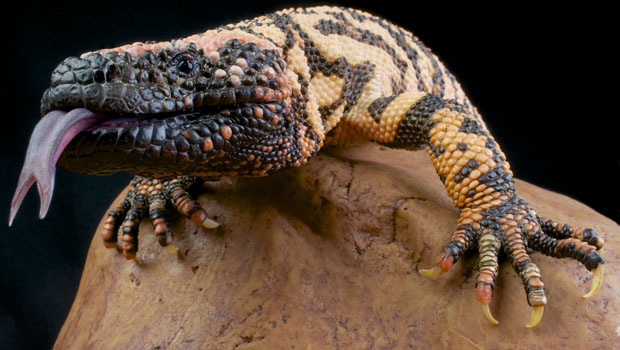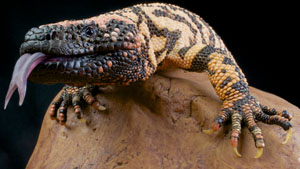Gila Monsters – A Secret Weapon Against Diabetes?

 One reason it might be hard to distinguish between fake diabetes cures and real diabetes treatments is that the origin stories behind real diabetes treatments can be stranger than fiction.
One reason it might be hard to distinguish between fake diabetes cures and real diabetes treatments is that the origin stories behind real diabetes treatments can be stranger than fiction.
For example, there has been a wave of recent headlines about an implantable pump that delivers exenatide-4, a drug that boosts after-meal insulin production – this drug was derived from Gila monster venom.
Endocrinologist Dr. John Eng began experimenting with the venom for treating Type 2 diabetes after he read it could inflame the pancreas, according to an article in The Daily Beast. He isolated two hormones from the venom and eventually created exenatide-4, a drug which encourages insulin secretion, suppresses glucagon secretion, and slows the emptying of the stomach.
Now a group of researchers from Arizona State University want to research the Gila monster further to see if the lizard is harboring more treatments for Type 2 diabetes and other conditions. They’ve raised more than $10,000 in funds on Experiment.com, a scientific crowdfunding site, to study the genome of this strange-looking lizard.
Researchers with the Arizona State University team say we don’t know enough about the creatures to know if they might yield more medical treasures, or even whether they are in danger of disappearing.
“In all the excitement about (exenatide-4), we don’t know the Gila monster genome sequence, how this salivary protein changes across species, or how much genetic diversity Gila monsters have in the wild,” writes Melissa Wilson Sayres, a computational and evolutionary biologist, and others.
Part of the thrust of the experiment is to gain insight into the genetic variation between Gila monster populations and individuals. The habitat of the lizard encompasses parts of Arizona, Utah, Nevada, and Mexico. In 2011, the U.S. Fish and Wildlife Service declined to review whether the Utah Gila monster population might be endangered; service officials said there wasn’t enough information to prove the Utah population was different than other Gila monsters in the U.S. southwest.
Gila monsters are considered the largest lizards in the U.S. They tend to live most of their lives underground, coming out to prey on small rodents and eggs. Because eggs don’t need to be immobilized before being eaten, it’s believed that their venom is mainly used for defensive purposes. It’s believed that the Gila monster population is likely being stressed from habitat destruction and poaching.
As of early May, The Arizona State University research team has begun taking quotes from labs for sequencing Gila monster genes. Although the crowdfunding campaign is officially over, you can still contribute here.